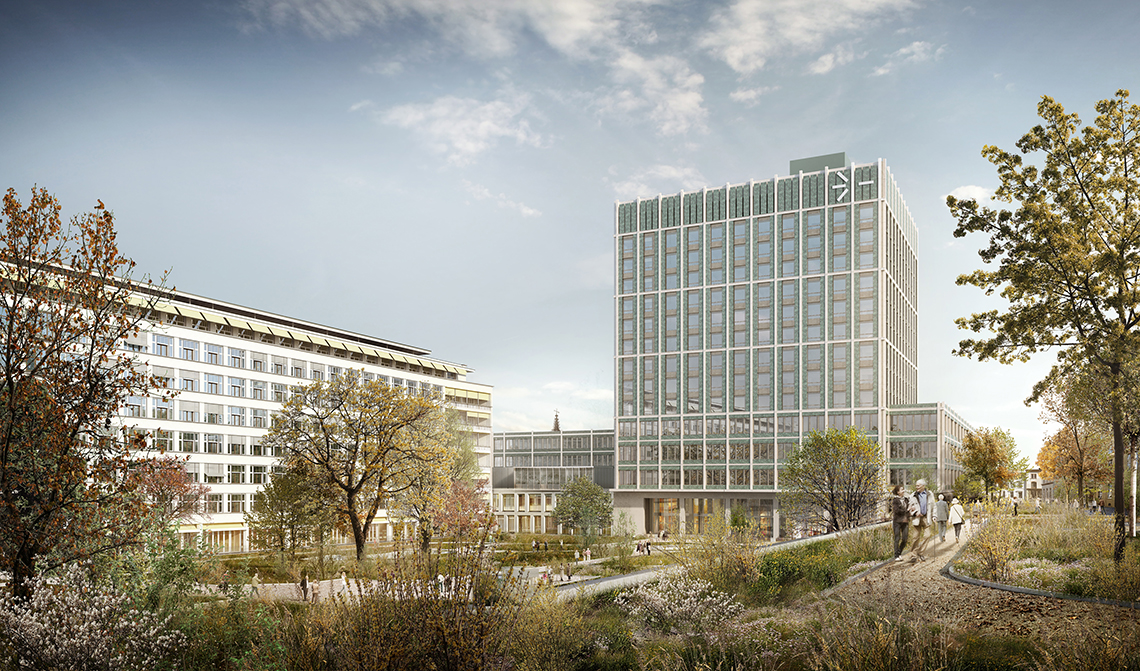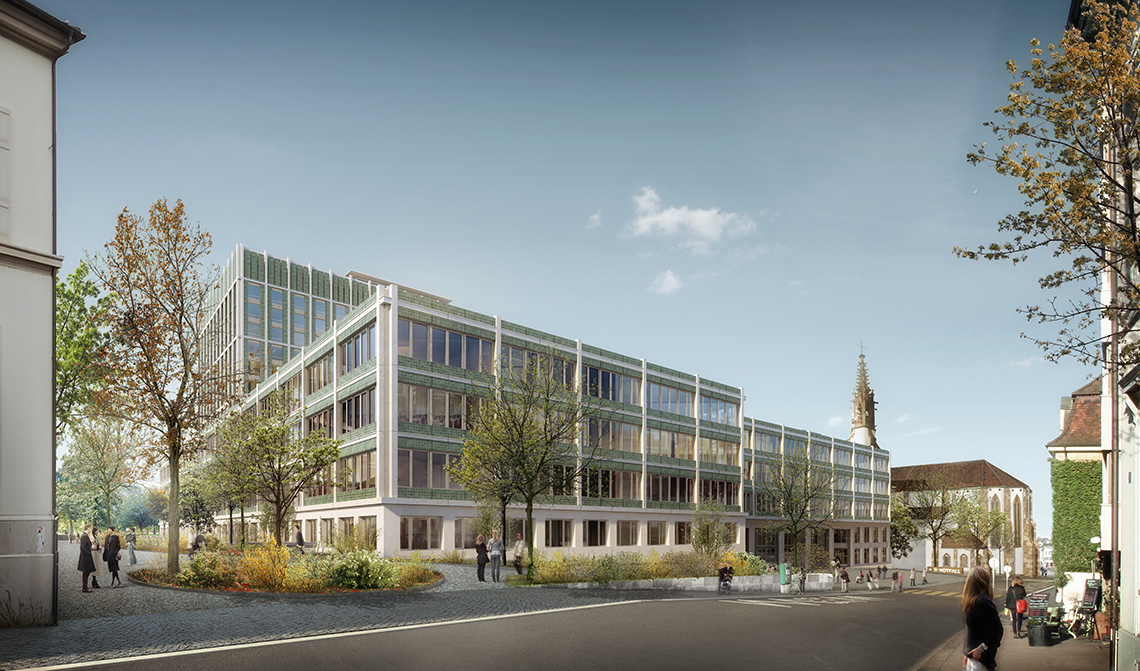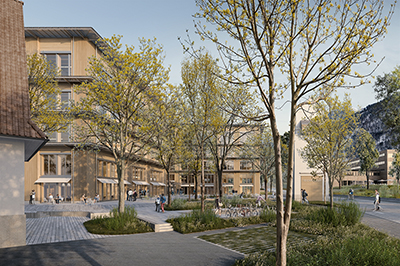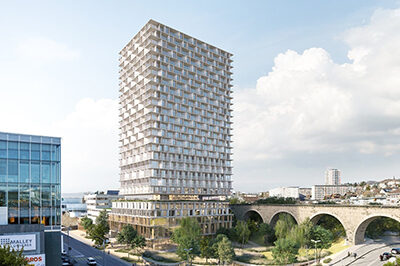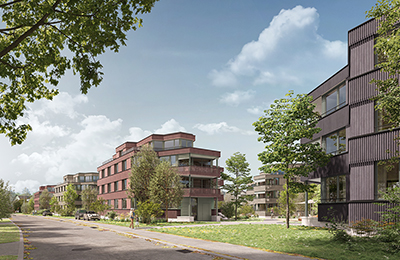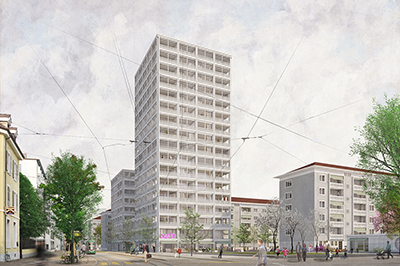
Neubau Klinikum 2, Universitätsspital Basel
| Client | Universitätsspital Basel |
| Architects | Giuliani Hönger Architekten, Zürich |
| Planning | 2013-2024 |
| Execution | 2021-2038 |
| Construction cost | ca 1.2 Mrd. CHF |
| Services | Structures and excavation: Competition Design phase Tender documentation phase Execution phase (including construction site management for civil engineering) |
| Visualisations | Giuliani Hönger Architekten |
| Topics | Health careBIMRefurbishmentHigh-riseConcrete constructionFair faced concrete |
The new building of Clinic 2 forms an ensemble with the existing Clinic 1 and frames the hospital garden as the most important public space of the site. It consists of a 60-meter-high bed tower and a plinth building with clinical functions.
Within the fitted building figure, differently proportioned courtyards allow daylight to enter the interior and create orientation. Reasonable building depths and a square support structure grid of 8.10 x 8.10 meters create the desired flexibility. A semi-public, two-story passageway space leads from Petersgraben to the Hospital garden and allows clear access to all important uses.
A skeleton structure in reinforced concrete, consisting of columns, ceilings and braced by the walls of the access zones, forms a clear and simply designed structure of the new hospital building. The load transfer for the high-rise bed tower is direct and does not require any complex load redirection. The basic grid of the prefabricated concrete columns is approx. 8.10m x 8.10m, and simple flat slabs are used for the ceiling system. The technical media are routed outside the ceiling structure in the sense of the required system separation. The few disturbances of the skeleton construction are reacted to by means of a joist ceiling (increase in span) and L-shaped frames (cantilevers).
The project will be realized in 2 stages. The existing hospital will be demolished step by step, the existing floor slab will be reinforced and integrated into the new structure.
The new building of hospital 2 is divided into high-installed and low-installed floors. Most of the clinical functions and the emergency center will be located in the high-installation plinth building, while the low-installation bed wards will utilize the majority of the tower. All areas can be easily accessed with short distances and ensure good operation. Phase 1 of the new building can accommodate both terminal occupancy and, in part, castling occupancy as well.
